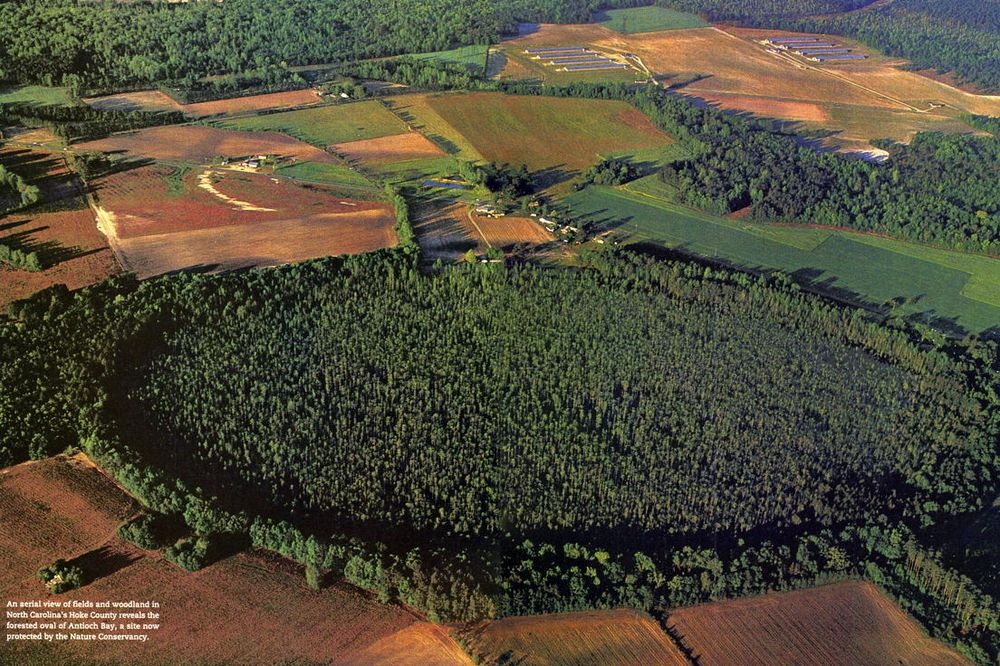These depressions are now collectively called Carolina Bays, but they are also known by different names.
The term bay is a reference to the variety of bay trees that grow in and around these depressions.
The alignment also deviates systematically by latitude.
The bottom line is nobody can explain them.
The Woods Bay and Bennett’s Bay, in South Carolina, are two examples of protected bays.
The majority of them were naturally eroded; others were destroyed by farming, logging, and housing development.
During the Second World War, a large bay in Georgetown County was used as a bombing practice range.
Today, these bays are surprisingly rich in biodiversity.
Many species of birds, migratory waterfowl, and mammals thrive in these wetlands.
Some of them are quite rare or endangered.
Other residents include dragonflies, green anoles and green tree frogs.
Several carnivorous plants also inhabit Carolina bays.
The original image that started the debate.
The average of the “Long Axis” of multitudes of individual Carolina Bays all converge in certain locations.
Image credit:www.georgehoward.net
Photo credit:cosmictusk.com
Photo credit: Cameron Davidson/Getty Images
Photo credit:www.georgehoward.net







